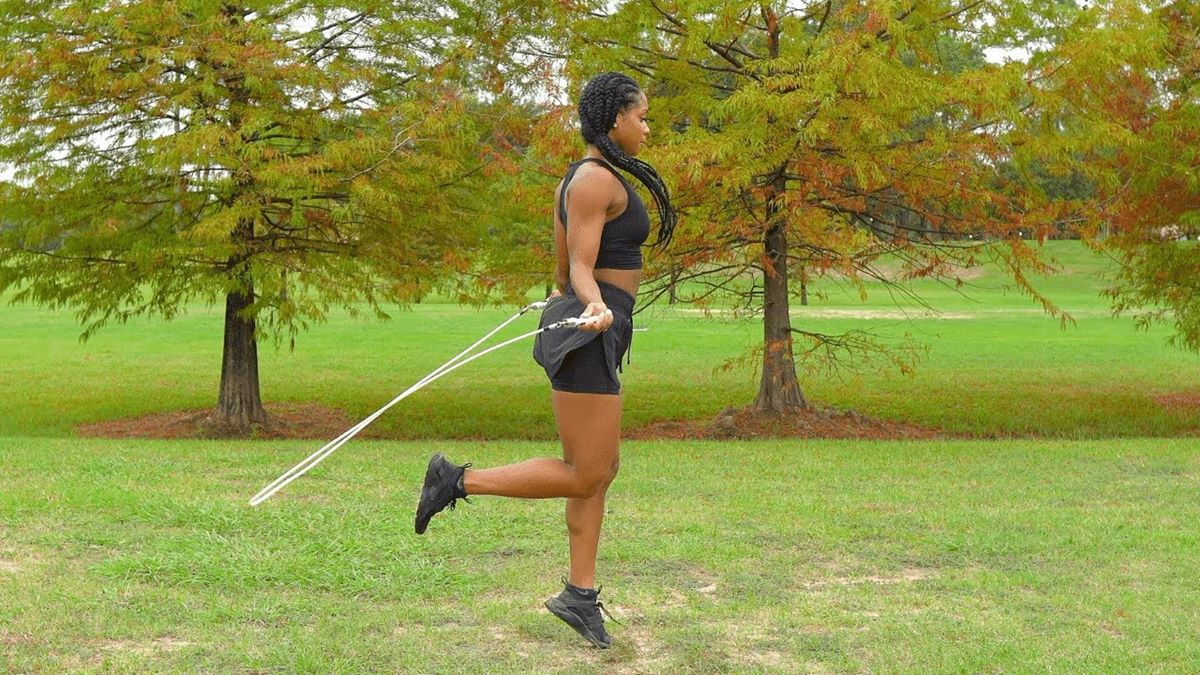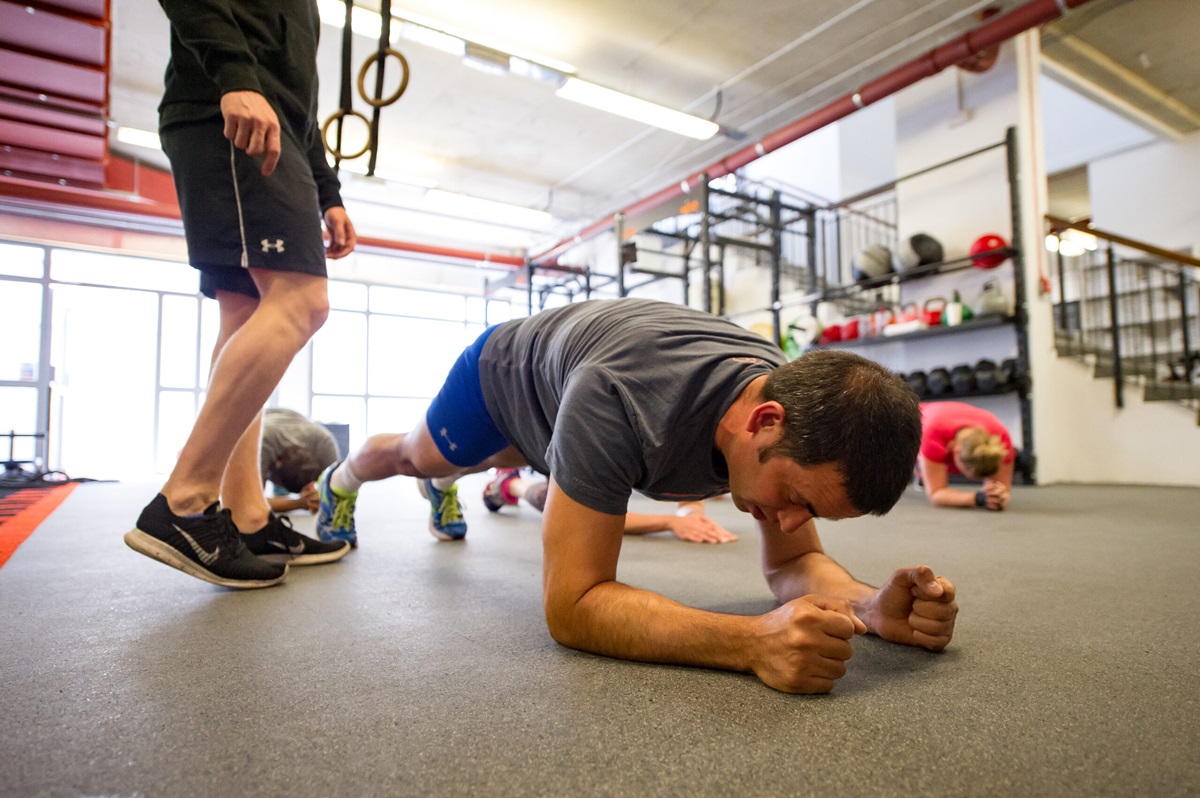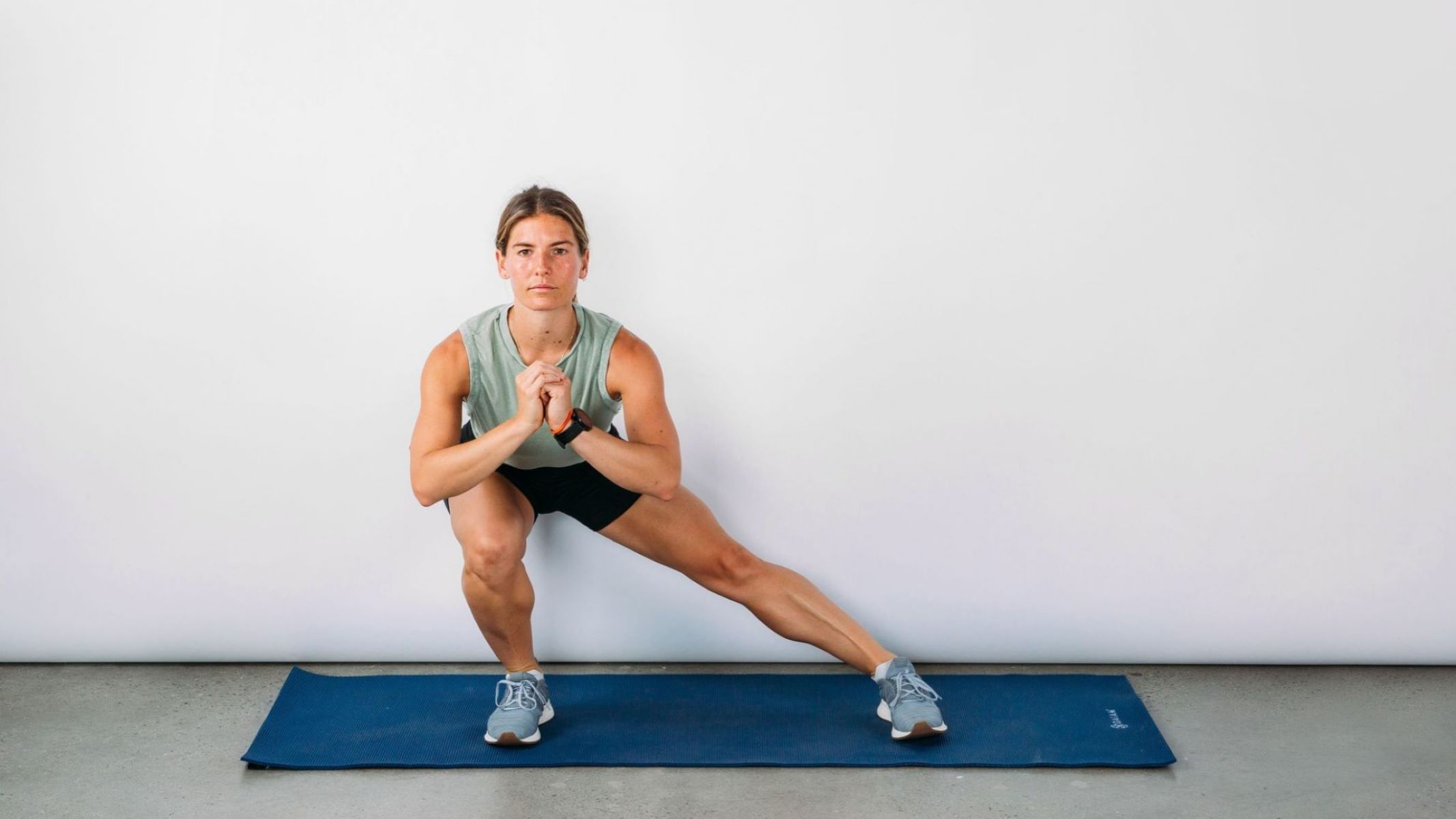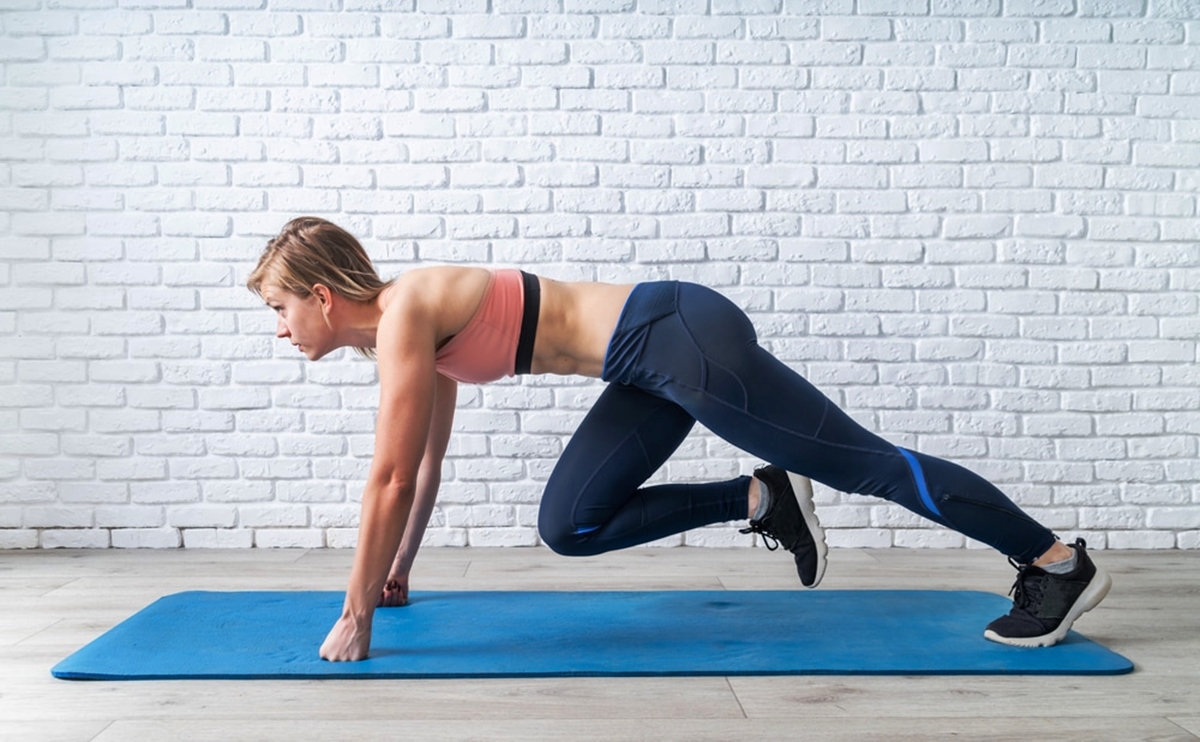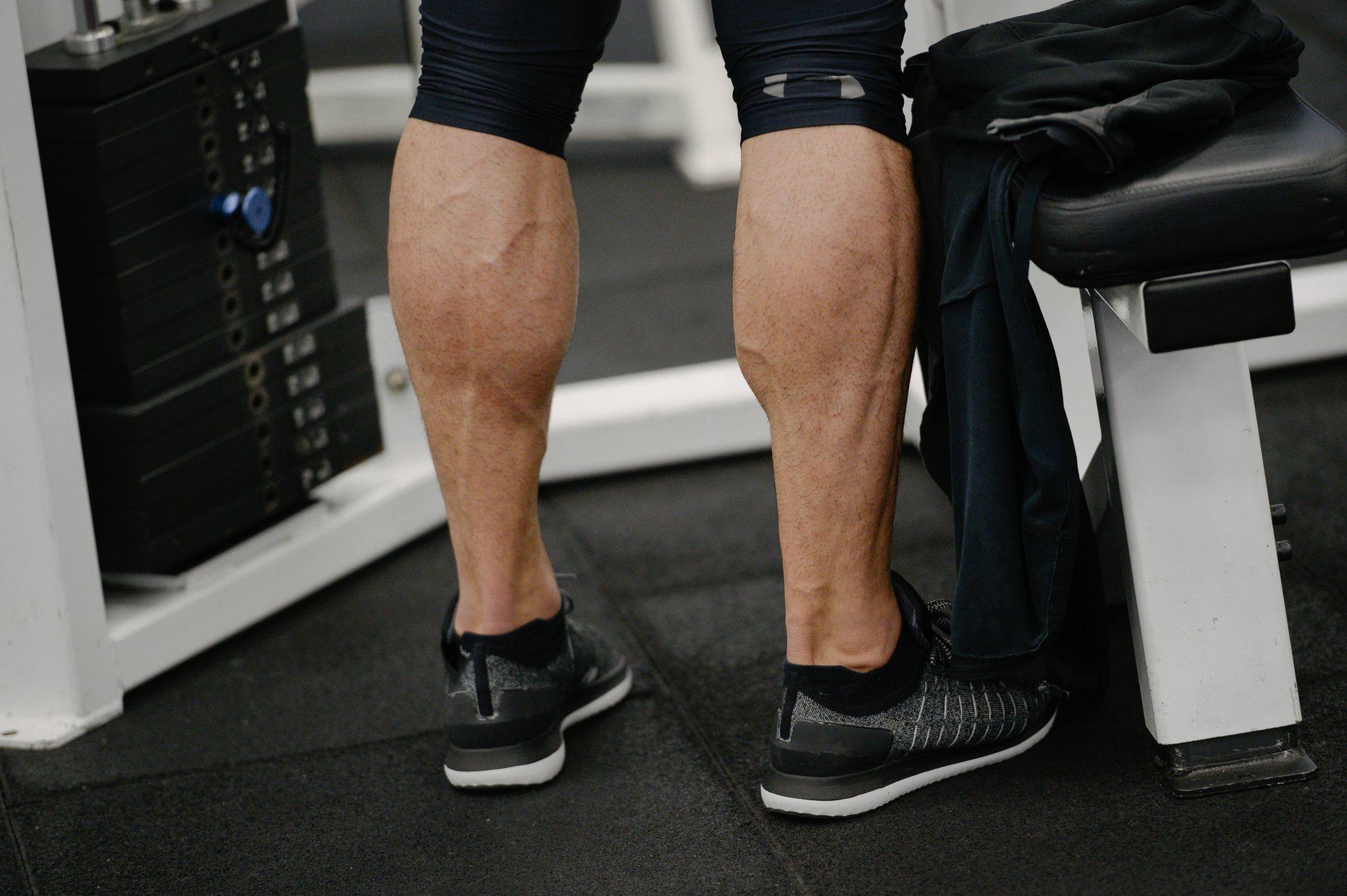Home>Misc>Featured>How Does Jump Rope Improve Cardiovascular Endurance


Featured
How Does Jump Rope Improve Cardiovascular Endurance
Modified: January 22, 2024
Jump rope is a featured exercise that enhances cardiovascular endurance, helping to improve overall fitness levels and burn calories efficiently.
Introduction
Cardiovascular endurance is a crucial aspect of overall fitness and plays a vital role in maintaining a healthy body and mind. It refers to the ability of the heart, lungs, and blood vessels to provide oxygen and nutrients to the muscles during prolonged physical activity.
Improving cardiovascular endurance is not only beneficial for athletes and fitness enthusiasts but also for individuals looking to lead a healthy lifestyle. Engaging in regular cardiovascular exercises can help lower the risk of heart disease, improve lung function, boost metabolism, and enhance overall stamina.
While there are many ways to improve cardiovascular endurance, one exercise that stands out is jumping rope. Jump rope workouts are not only fun and convenient but also provide an effective means of improving cardiovascular fitness. In this article, we will delve into how jump rope can improve cardiovascular endurance and provide tips on incorporating it into your fitness routine.
So, if you’re ready to take your fitness to the next level and improve your cardiovascular health, let’s dive in!
Understanding Cardiovascular Endurance
Cardiovascular endurance is a measure of how efficiently your body can deliver oxygen to the muscles during physical activity. It is a key component of overall fitness and is vital for performing activities that require sustained effort, such as running, cycling, swimming, or even walking for extended periods.
When you engage in cardiovascular exercise, your heart beats faster, pumping more oxygen-rich blood to your muscles. Your lungs work harder to take in oxygen, which is then transported by the blood to the working muscles. The blood vessels expand, allowing for increased blood flow and improved circulation.
The more efficiently your cardiovascular system functions, the longer and harder you can exercise without feeling fatigued. It also allows your body to recover more quickly after intense physical activity. Improved cardiovascular endurance can have a positive impact on your daily life by increasing your energy levels, reducing the risk of heart disease, and enhancing overall endurance.
Factors such as genetics, age, gender, and overall fitness level can influence cardiovascular endurance. However, with regular exercise and training, you can improve your body’s ability to deliver oxygen to the muscles and enhance your cardiovascular endurance.
Now that we have a basic understanding of cardiovascular endurance, let’s explore the specific benefits it offers.
Benefits of Cardiovascular Endurance
Improving cardiovascular endurance through regular exercise provides a wide range of benefits that extend beyond just physical fitness. Let’s take a closer look at some of the key advantages:
- Improved Heart Health: Cardiovascular exercises strengthen the heart muscles, making it more efficient in pumping blood throughout the body. This helps lower blood pressure, reduce the risk of heart disease, and improve overall cardiovascular health.
- Increased Stamina and Energy Levels: Building cardiovascular endurance allows you to perform daily activities with less fatigue. You’ll have more energy to tackle tasks and engage in physical activities, leading to increased productivity and a better quality of life.
- Weight Management: Engaging in regular cardiovascular exercises can aid in weight loss or weight maintenance. These exercises burn calories and boost metabolism, helping you achieve and maintain a healthy weight.
- Improved Lung Function: Cardiovascular workouts require increased oxygen intake, leading to improved lung capacity and function. This can enhance your overall respiratory health and reduce the risk of respiratory conditions.
- Reduced Stress and Improved Mental Health: Cardiovascular exercises release endorphins, also known as the “feel-good” hormones, which promote a positive mood and reduce stress and anxiety. Regular exercise also improves sleep patterns and enhances overall mental well-being.
- Enhanced Physical Performance: When your cardiovascular endurance improves, you’ll notice an improvement in your athletic performance. Whether you’re a runner, cyclist, or participate in team sports, you’ll have increased stamina and be able to push through workouts or competitions for longer periods of time.
These are just a few examples of the many benefits that cardiovascular endurance training can provide. Whether your focus is on maintaining a healthy weight, improving heart health, or enhancing overall fitness, incorporating exercises to improve cardiovascular endurance is essential.
Jump Rope as a Cardiovascular Exercise
Jumping rope is an excellent cardiovascular exercise that has gained popularity not only among athletes but also among individuals looking to improve their overall fitness. It is a simple yet highly effective workout that engages multiple muscle groups and gets your heart pumping. Here’s why jump rope is a fantastic cardiovascular exercise:
1. Convenience: Jump rope workouts can be done virtually anywhere, making it a convenient exercise option. Whether you’re at home, in the gym, or traveling, all you need is a rope and enough space to jump. It’s a portable exercise that requires minimal equipment.
2. Cost-effective: Jump ropes are affordable and accessible to almost anyone. Compared to expensive gym memberships or workout equipment, a jump rope is a budget-friendly option that provides a high-intensity cardiovascular workout.
3. High calorie burn: Jumping rope is a highly efficient calorie-burning exercise. It can burn up to 10 calories per minute, making it a great choice for those looking to lose weight or maintain a healthy weight. The intensity of the exercise contributes to the high calorie burn.
4. Full-body workout: Jumping rope engages multiple muscle groups simultaneously, providing a full-body workout. It activates the calves, quadriceps, hamstrings, glutes, shoulders, and core muscles. By involving multiple muscle groups, jump rope workouts help improve overall strength and endurance.
5. Cardiovascular benefits: Jump rope is an excellent cardiovascular exercise that increases heart rate and improves cardiovascular endurance. It helps improve oxygen delivery to the muscles, strengthens the heart muscles, and promotes better circulation.
6. Coordination and agility: Jump rope workouts require coordination and agility, as you must time your jumps and maintain a steady rhythm. Regular jump rope training can improve your overall coordination and agility, benefiting your everyday life activities and other sports.
Jump rope offers a fun and challenging way to improve cardiovascular endurance and achieve your fitness goals. Whether you’re a beginner or an experienced fitness enthusiast, the versatility and effectiveness of jump rope workouts make it a valuable addition to any fitness routine.
How Jump Rope Improves Cardiovascular Endurance
Jump rope provides an intense cardiovascular workout that can significantly improve your endurance over time. Here are several ways in which jump rope exercises contribute to improving cardiovascular endurance:
1. Increased Heart Rate: Jumping rope elevates your heart rate, forcing your cardiovascular system to work harder. This sustained increase in heart rate strengthens your heart muscle, making it more efficient at pumping blood throughout your body.
2. Improved Oxygen Circulation: As you jump rope, your breathing becomes deeper and more intense, allowing for better oxygen intake. This increased oxygen circulates through your bloodstream, delivering essential nutrients to your muscles and enhancing their endurance.
3. Enhanced Lung Capacity: Jumping rope requires rhythmic and controlled breathing, promoting better lung function. Regular jump rope workouts increase lung capacity, enabling your body to take in more oxygen with each breath and improving overall respiratory efficiency.
4. Greater Endurance Threshold: Jumping rope challenges your endurance threshold, pushing you to sustain physical activity for longer durations. As you consistently engage in jump rope workouts, you gradually build stamina and increase your capacity for sustained exercise.
5. Interval Training Effect: Incorporating interval training techniques into your jump rope workouts can maximize cardiovascular endurance benefits. High-intensity intervals, such as alternating between fast and slow jumping speeds or varying the intensity of your jumps, can help improve both aerobic and anaerobic fitness levels.
6. Engages Multiple Muscle Groups: Jump rope exercises engage not only your cardiovascular system but also numerous muscle groups throughout your body. The constant jumping motion activates the muscles in your legs, core, and shoulders, promoting strength and endurance development.
7. Fun and Varied Workouts: One of the advantages of jump rope exercises is the ability to customize your workouts. You can incorporate various jump rope techniques, such as double unders, crossovers, or side swings, to keep your workouts challenging and engaging. This variation prevents boredom, helping you stay motivated to improve your cardiovascular endurance.
By consistently incorporating jump rope exercises into your fitness routine, you can enjoy improved cardiovascular endurance, allowing you to engage in longer, more intense workouts while reaping the overall health benefits of a stronger and more efficient cardiovascular system.
Types of Jump Rope Workouts for Cardiovascular Endurance
When it comes to improving cardiovascular endurance with jump rope, there are various workout styles and techniques you can incorporate into your routine. Here are a few types of jump rope workouts that can enhance your cardiovascular fitness:
1. Steady-State Jumping: This is a basic and straightforward jump rope workout where you maintain a steady pace for an extended period. Start by jumping at a moderate pace for a set duration, such as 10 minutes, or a specific number of jumps. As you build your endurance, gradually increase the duration or the number of jumps to challenge yourself.
2. Interval Training: Interval training involves alternating between high-intensity and low-intensity periods. For example, you can jump rope at a fast pace for 30 seconds, followed by 30 seconds of slower-paced jumping or active rest, and repeat this pattern for several rounds. This interval training technique enhances cardiovascular endurance by pushing your heart rate up during the high-intensity intervals and allowing for brief recovery periods.
3. Tabata Jump Rope: Tabata training is a form of high-intensity interval training. Perform 20 seconds of jump rope exercises at maximum intensity, followed by 10 seconds of rest. Repeat this cycle for a total of 8 rounds, totaling 4 minutes. Tabata workouts are short but highly effective in improving cardiovascular endurance and burning calories.
4. Double Unders: Double unders are a more advanced jump rope technique that involves rotating the rope twice beneath your feet with a single jump. Performing consecutive double unders challenges both cardiovascular endurance and coordination. Start by mastering regular jumps before progressing to double unders. As you become more proficient, incorporate them into your workouts for added intensity.
5. CrossFit-inspired Jump Rope Workouts: CrossFit workouts often include jump rope exercises. These workouts typically involve a combination of jump rope intervals, bodyweight exercises, and strength training. Engaging in CrossFit-inspired jump rope workouts can be an effective way to improve cardiovascular endurance while enjoying a varied and challenging routine.
6. Jump Rope Circuit Training: Create a circuit training routine that incorporates jump rope exercises along with other bodyweight exercises or equipment. Alternate between different exercises, such as push-ups, squats, or burpees, with jump rope intervals. The combination of cardiovascular and strength exercises in a circuit format can be an efficient method to enhance overall endurance.
Remember to start at a comfortable intensity and gradually increase the duration, intensity, or complexity of your jump rope workouts as your cardiovascular endurance improves. It’s essential to listen to your body and adjust the intensity and duration based on your fitness level and goals.
By incorporating these types of jump rope workouts into your fitness routine, you can elevate your cardiovascular endurance and enjoy the benefits of improved overall fitness and cardiovascular health.
Tips for Incorporating Jump Rope into Your Fitness Routine
If you’re ready to include jump rope workouts in your fitness routine to improve cardiovascular endurance, here are some helpful tips to get you started:
1. Warm Up and Cool Down: Before beginning your jump rope workout, warm up with dynamic stretches and light cardio exercises like jogging or jumping jacks. This helps prepare your body for the intense activity and reduces the risk of injury. Similarly, finish your workout with a cool-down routine to gradually lower your heart rate and stretch your muscles.
2. Choose the Right Jump Rope: Select a jump rope that is appropriate for your height and fitness level. A properly sized rope should reach between your armpits and your chest when the handles are held at your sides. Consider using a lightweight speed rope for faster turning and more challenging workouts.
3. Start with Basic Jumps: If you’re new to jump rope workouts, begin with basic jumps, which involve jumping with both feet together and clearing the rope with a small hop. Focus on maintaining good form, keeping your core engaged, and lightening your landings to minimize impact on your joints. As you become more comfortable, experiment with different jump variations and techniques.
4. Gradually Increase Intensity and Duration: When incorporating jump rope into your fitness routine, start with shorter workouts, such as 5-10 minutes, and gradually increase the duration as your cardiovascular endurance improves. You can also increase the intensity by adding intervals or increasing your speed. However, remember to pace yourself and listen to your body to prevent overexertion.
5. Mix Jump Rope with Other Exercises: Combine jump rope exercises with other types of cardiovascular exercises, such as running, cycling, or swimming, to add variety and challenge to your workouts. This diversity helps target different muscle groups and keeps your workouts interesting.
6. Stay Consistent: Consistency is key when it comes to improving cardiovascular endurance. Aim to include jump rope workouts in your routine at least 2-3 times a week. This frequency allows your body to adapt and progress gradually over time. Remember, even shorter, more frequent sessions can be beneficial for building endurance.
7. Incorporate Rest and Recovery: Don’t forget to include rest days in your fitness routine to allow your body to recover and repair. Overtraining can hinder progress and increase the risk of injury. Listen to your body and give yourself time to rest and rejuvenate between intense jump rope workouts.
8. Monitor Your Progress: Keep track of your jump rope workouts and monitor your progress over time. Set specific goals, whether it’s increasing the number of jumps, extending the duration of your workouts, or improving your overall endurance. Having measurable goals can help you stay motivated and celebrate your achievements.
Now that you have these tips in mind, you can incorporate jump rope workouts into your fitness routine and enjoy the many benefits of improved cardiovascular endurance. Remember to start at your own pace, stay consistent, and have fun while challenging yourself with this versatile and effective exercise!
Precautions and Considerations
While jump rope is generally a safe and effective exercise for improving cardiovascular endurance, there are a few precautions and considerations to keep in mind:
1. Consult with a Healthcare Professional: If you have any pre-existing medical conditions, such as heart problems, joint issues, or balance concerns, it is best to consult with a healthcare professional before starting any new exercise program. They can provide personalized advice and guidance based on your specific needs and condition.
2. Start Slowly: If you are new to jump rope exercises or haven’t engaged in physical activity for a while, start slowly and gradually increase the intensity and duration of your workouts. This approach allows your body to adapt and reduces the risk of injury.
3. Listen to Your Body: Pay attention to any pain or discomfort during jump rope workouts. If you experience joint pain, particularly in the knees or ankles, consider using a jump rope mat, wearing supportive shoes, or adding a cushioned surface to reduce the impact on your joints.
4. Proper Technique and Form: Focus on maintaining good posture, engaging your core, and landing softly while jumping rope. Using proper technique helps prevent unnecessary strain on your muscles and joints and ensures an effective and safe workout.
5. Stay Hydrated: Jump rope exercises can be intense and cause you to sweat. It’s essential to stay hydrated before, during, and after your workouts. Drink water regularly to replace the fluids lost through sweating and to maintain optimal performance.
6. Allow for Rest and Recovery: Rest days are an essential part of any exercise routine. As you engage in jump rope workouts to improve cardiovascular endurance, make sure to give your body sufficient time to rest and recover. Listen to your body’s signals and avoid overtraining, which can lead to fatigue and increased risk of injury.
7. Consider Your Environment: Choose a safe and suitable location for your jump rope workouts. Avoid areas with clutter, uneven surfaces, or obstacles that could cause tripping or injury. Ensure you have enough space to swing the rope comfortably without hitting objects or people nearby.
8. Modify and Progress Gradually: Adjust the intensity of your jump rope workouts based on your current fitness level, gradually increasing the difficulty as your cardiovascular endurance improves. Modify jump rope techniques or incorporate variations that suit your abilities and goals.
By taking these precautions and considerations into account, you can safely and effectively incorporate jump rope exercises into your fitness routine, ensuring you derive the maximum benefit from this fantastic cardiovascular workout.
Conclusion
Jump rope is a versatile and effective exercise that can significantly improve cardiovascular endurance. By engaging in regular jump rope workouts, you can enhance your heart health, increase stamina, boost lung function, and achieve a higher level of overall fitness.
We explored the importance of cardiovascular endurance and the benefits it offers, including improved heart health, increased energy levels, weight management, and reduced stress. Jump rope workouts provide a convenient, cost-effective, and enjoyable way to enhance cardiovascular fitness.
Different types of jump rope workouts, such as steady-state jumping, interval training, Tabata, double unders, and circuit training, can be tailored to your fitness level and goals. These workouts engage multiple muscle groups and challenge your cardiovascular system, leading to improved endurance over time.
When incorporating jump rope into your fitness routine, remember to warm up, choose the right jump rope, start with basic jumps, gradually increase intensity, and mix it with other exercises for variety. Consistency, rest, and progression are key factors in achieving and maintaining optimal cardiovascular endurance.
However, it’s important to take precautions and consider factors such as consulting with a healthcare professional, starting slowly, listening to your body, maintaining proper technique, staying hydrated, and allowing for rest and recovery. Prioritizing safety and understanding your body’s limits will help you enjoy the long-term benefits of jump rope workouts.
In conclusion, jump rope is an excellent choice for improving cardiovascular endurance. It is an accessible, cost-effective, and enjoyable exercise that can be customized to suit individual fitness levels and goals. By incorporating jump rope into your fitness routine and following the proper precautions, you can undoubtedly experience the positive impact that enhanced cardiovascular endurance has on your overall health and well-being.

